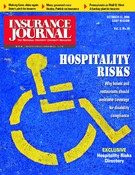Many single-family homes today look more and more like grand estates than the simple boxy houses with attached garages that were abundant not so long ago. Homes are much larger and more customized compared to 20 or 30 years ago despite being packed into subdivisions like sardines. We now have more interior square footage, more bathrooms, and more custom features than ever before. In the past, many of these custom characteristics were not specifically considered as rating variables for insuring homes, even though they were used to determine the amount of insurance charged. Today, this trend is changing.
Pricing methodologies
The average total value at risk to loss has risen considerably over the years, but pricing methodologies across the industry have, for the most part, remained the same for four or five decades. These days many companies in the industry are scrounging to catch up by building pricing methodologies that take into account the newer trends and increasing sizes in homes in order to adjust to rising home values. Ideally, the adjustments produce prices that better reflect the actual risk characteristics in a home, instead of grouping dissimilar risks into a category with thousands of other homes that are really vastly different.
For example, a traditional pricing methodology may simply ask for the number of stories in the home; the fire protection class; and total insured value to determine the rate. A newer multi-variant pricing plan may ask for specific home style like ranch or split-level; number of water sources in the home; and other characteristics in addition to traditional variables in order to determine a more accurate rate. The result can put the home in a different pricing category and rate the risk more accurately.
A large part of the change in pricing methodologies goes beyond physical attributes of the home, including homeowner history, which can be a good indicator of the future of the risk. Companies could consider the age of the insured, credit history, number of mortgages on the home and the number of previous cancellations on the account. These factors have stood the test of time as predictors of future activity on the account.
Benefits of improved sophistication
Enhanced pricing sophistication using these more detailed characteristics provides two areas of significant benefit to any company: improved underwriting profits and market expansion.
Profitability. Through better risk segmentation, customers pay a price that more accurately reflects the risk they have. Lower risk customers pay a reduced price, while higher risk customers pay an increased price, compared to current pricing methodologies. Accurate prices limit the amount of adverse selection that a company can experience when competitors offer lower prices to the customers with the highest profit margins. Over the long-term, risks that are priced accurately result in better underwriting results.
Market expansion. When a company offers lower prices, it is likely that agents and customers will be more attracted to these rates and new business will increase. Likewise, renewal retention of these insureds will usually rise. For the type of risks that now have higher rates, the company should now expect a better profit margin and thus want to write risks that formerly may have been outside their underwriting appetite.
Automation. To automate the process of collecting this additional data, companies are filling in the newly accounted data automatically, which can be done any number of ways. Data pre-fill information can be pulled from county tax records, the national Multiple Listing Service (MLS), or a replacement cost vendor such as ISO HomeValue, which has a database with detailed information for millions of single-family residences in the United States.
Making the change industry-wide
Though the new approach to rating sounds like a win-win for everyone involved, there is caution to dropping a tried and true pricing plan for an all-new methodology with new and different characteristics. The first mover in the market to adopt a new pricing approach may appear to put itself in an uncompetitive position compared to companies that use more traditional pricing. That’s because competing companies continue to segment risk using traditional pricing structures, resulting in lower premiums for risks that do not necessarily present lower potential for loss.
However, this shouldn’t alarm the pricing managers in the industry. Although the benefit to moving first may not materialize immediately, the long term benefits are worth the risk. The sooner a carrier embraces better segmentation through data sources, the sooner they benefit from improved loss results.
Patrick Madigan is assistant vice president, Underwriting, and David Schoonmaker is underwriting quality assurance and training manager for Kemper Auto and Home, a Unitrin Company.
Was this article valuable?
Here are more articles you may enjoy.


 Court Orders Justice Family Coal Companies to Pay $1M to Liberty Mutual Unit
Court Orders Justice Family Coal Companies to Pay $1M to Liberty Mutual Unit  10 Highest Class-Action Settlements in 2025 Eclipsed $70B Total: Duane Morris
10 Highest Class-Action Settlements in 2025 Eclipsed $70B Total: Duane Morris  SIAA Announces Strategic Partnership With Progressive
SIAA Announces Strategic Partnership With Progressive  Adjusters Launch ‘CarFax for Insurance Claims’ to Vet Carriers’ Damage Estimates
Adjusters Launch ‘CarFax for Insurance Claims’ to Vet Carriers’ Damage Estimates 


